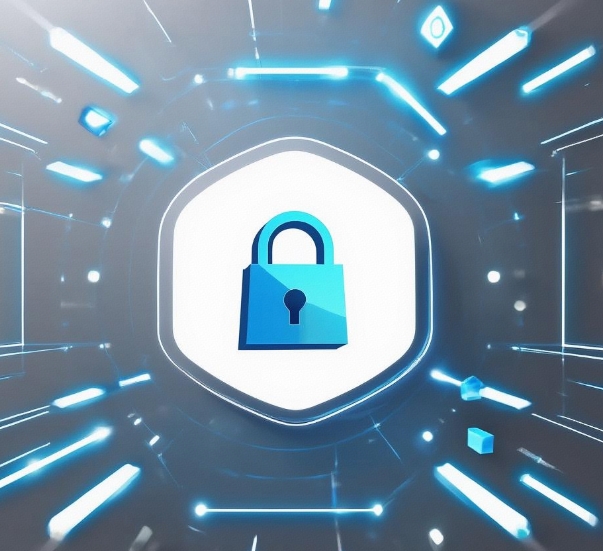Data Privacy Protection and Compliance Requirements in Blockchain Development
- latest articles
- 1.DApp Development & Customization: Merging Diverse Market Needs with User Experience 2.Analysis of the Core Technical System in DApp Project Development 3.How to achieve cross-chain interoperability in Web3 projects? 4.How does the tokenization of points reconstruct the e-commerce ecosystem? 5.How to Set and Track Data Metrics for a Points Mall? 6.What is DApp Development? Core Concepts and Technical Analysis 7.Inventory of commonly used Web3 development tools and usage tips 8.Development of a Distribution System Integrated with Social E-commerce 9.Six Key Steps for Businesses to Build a Points Mall System 10.What is DApp Development? A Comprehensive Guide from Concept to Implementation
- Popular Articles
- 1.Future Trends and Technology Predictions for APP Development in 2025 2.Analysis of the DeFi Ecosystem: How Developers Can Participate in Decentralized Finance Innovation 3.From Zero to One: How PI Mall Revolutionizes the Traditional E-commerce Model 4.DAPP Development | Best Practices for Professional Customization and Rapid Launch 5.Recommended by the Web3 developer community: the most noteworthy forums and resources 6.From Cloud Computing to Computing Power Leasing: Building a Flexible and Scalable Computing Resource Platform 7.How to Develop a Successful Douyin Mini Program: Technical Architecture and Best Practices 8.Shared Bike System APP: The Convenient Choice in the Era of Smart Travel 9.How to Create a Successful Dating App: From Needs Analysis to User Experience Design 10.From Design to Development: The Complete Process of Bringing an APP Idea to Life
With the rapid advancement of digitization and technology, blockchain has gradually evolved from a cutting-edge innovation into a widely recognized and applied tool. In various fields such as finance, healthcare, and logistics, blockchain demonstrates immense potential due to its decentralized and immutable characteristics. However, during the application of blockchain, data privacy protection and compliance issues have become unavoidable challenges.
Blockchain technology is essentially a transparent, distributed ledger where all transaction information can be viewed by nodes in the network. While this transparency is one of its core advantages, it also poses significant risks to data privacy. In the development of blockchain, balancing transparency and privacy protection to ensure users' personal information is not leaked, while complying with regulatory requirements across different countries and regions, is a critical issue that developers and enterprises must focus on.
I. The Basic Principles of Blockchain and the Challenges of Data Privacy
Blockchain is a decentralized distributed ledger technology that ensures data security through encryption and achieves consensus among nodes in the network regarding data accuracy. Whenever a transaction occurs, it is recorded in a block and linked to previous blocks via cryptographic algorithms, forming a chain structure. The immutability of this structure provides blockchain with high data integrity and security.
However, this public transparency of blockchain also leads to the risk of privacy breaches. In most blockchain networks, all transaction information is public, and anyone can view all transaction records on the blockchain. Although each transaction is encrypted, if a user's identity can be linked to a transaction address, their transaction activities become visible to everyone. As a result, users' personal information, transaction behavior, and even financial status may be exposed, posing privacy risks.
Manifestations of Blockchain Privacy Issues:
Transaction Transparency: All transaction data on the blockchain can be publicly queried. Without effective anonymization measures, users' identities and transaction information are easily exposed.
Identity Correlation: On the blockchain, users' transaction addresses and identity information can often be linked through third-party means. Once an identity is matched with a blockchain address, all transactions associated with that address become exposed.
Data Leakage in Smart Contracts: Data involved in the execution of smart contracts may also be exposed to all participants. If the contract is not encrypted, the content and details of transactions between participants become transparent.
II. Current State and Technical Means of Data Privacy Protection
To address privacy issues in blockchain, many technical methods have been proposed and are gradually maturing in practical applications. The following are the main technical solutions for blockchain privacy protection:
1. Zero-Knowledge Proof (ZKP)
Zero-Knowledge Proof is a technology that allows proving the truth of a statement without revealing any additional information. Through ZKP, users in a blockchain network can prove the authenticity of a transaction without disclosing its details. This technology has been applied in several blockchain projects, such as Zcash and Monero, which use zero-knowledge proofs to achieve transaction privacy protection.
2. Homomorphic Encryption
Homomorphic encryption is a cryptographic method that allows computations to be performed on encrypted data without decrypting it first. Using homomorphic encryption, developers can perform operations on encrypted data while ensuring data privacy and maintaining the effectiveness of data processing. Although theoretically ideal, homomorphic encryption currently faces performance bottlenecks in blockchain applications due to its high computational complexity.
3. Ring Signature
Ring signature is a technology that verifies the authenticity of a signature while ensuring anonymity. Through ring signatures, users on the blockchain can conduct anonymous transactions, preventing their transaction activities from being traced back to their personal identities. Monero, for example, uses ring signatures and stealth addresses to protect users' transaction privacy.
4. Privacy Coins and Mixing Services
Privacy coins (such as Monero and Zcash) provide fully anonymous transaction methods through various encryption technologies, avoiding the exposure of user identities and transaction records. Additionally, mixing services (e.g., CoinJoin) can combine multiple users' transactions to enhance transaction anonymity.
III. Blockchain Compliance Requirements
In addition to data privacy protection, compliance in blockchain applications is also a critical issue. As an emerging technology, blockchain's legal and regulatory frameworks are still evolving. Different countries and regions have varying compliance requirements for blockchain technology, posing greater challenges for its development and application.
1. Data Protection Laws and Privacy Requirements
As data privacy issues become increasingly severe, legal requirements for personal data protection are becoming stricter worldwide. The European Union's General Data Protection Regulation (GDPR) is one of the most stringent laws for personal privacy protection globally. GDPR imposes strict regulations on data collection, storage, processing, and transfer, requiring enterprises to adhere to principles of transparency, fairness, and legality when using personal data.
For blockchain applications, GDPR presents significant challenges. The immutability of blockchain means that once data is written to the blockchain, it cannot be deleted, conflicting with GDPR's "right to erasure" principle. Additionally, GDPR requires enterprises to delete personal data upon user request, whereas in blockchain, once data is recorded, it cannot be deleted or modified.
2. Cross-Border Data Flow in Blockchain
Blockchain technology is decentralized, meaning data can flow globally. However, different countries and regions have varying regulatory requirements for cross-border data flow. For example, the EU imposes strict restrictions on cross-border data flow, requiring that data protection levels in third countries be equivalent to those in the EU before data transfer. In contrast, countries like the United States have more lenient compliance requirements for blockchain technology.
Therefore, when developing cross-border blockchain applications, developers must consider how to comply with the legal requirements of different countries to ensure data flow does not violate relevant regulations.
3. Anti-Money Laundering (AML) and Know Your Customer (KYC)
In the financial sector, blockchain applications must not only address data privacy issues but also comply with regulatory requirements such as Anti-Money Laundering (AML) and Know Your Customer (KYC). AML and KYC require financial institutions to verify customer identity information during transactions to prevent money laundering and other illegal activities.
For blockchain developers, ensuring user privacy while adhering to AML and KYC regulations is a key challenge. In recent years, some blockchain projects have introduced compliant identity verification mechanisms, enabling transactions that protect user privacy while meeting regulatory requirements.
IV. Future Prospects and Challenges
As blockchain technology continues to develop and be widely applied, data privacy protection and compliance issues will become increasingly important. To ensure privacy protection while complying with legal requirements, blockchain developers must continuously explore new technical methods and compliance strategies.
In the future, with technological advancements, privacy protection technologies such as zero-knowledge proofs and homomorphic encryption are expected to further develop, improving their efficiency in blockchain applications. At the same time, global legal and regulatory frameworks will continue to evolve in terms of blockchain compliance, providing clearer guidance for the legitimacy of blockchain applications.
However, the inherent characteristics of blockchain, such as decentralization and anonymity, will always pose challenges to privacy protection and compliance. Developers must find the optimal balance under the dual constraints of technology and law.
-

How to achieve cross-chain interoperability in Web3 projects?
With the continuous development of WEB3 technology, Web3 has gradually become an···
-

Inventory of commonly used Web3 development tools and usage tips
With the continuous development of blockchain technology, Web3 has become a hot ···
-

Web3 development trend prediction: analysis of future technology directions and application scenarios
With the gradual development of blockchain technology, the concept of Web3 has m···

 Blockchain
Blockchain












